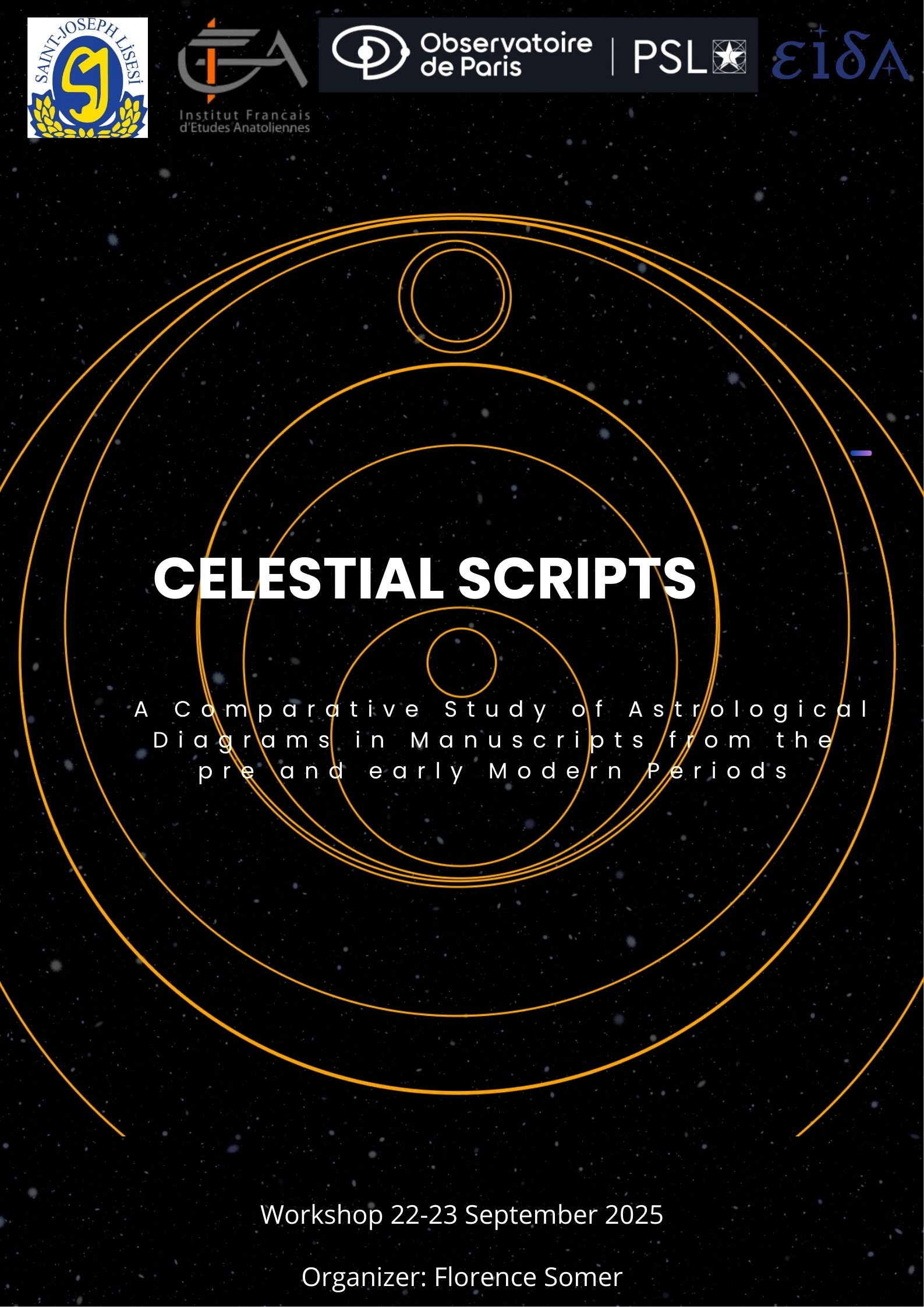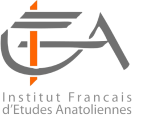
Link to the workshop’s Hypothèses website: https://eida.hypotheses.org/seminars-2/2025-celestial-scripts-a-comparative-study-of-astrological-diagrams-in-manuscripts-from-the-pre-and-early-modern-periods
In English
In hybrid at Istanbul Özel Saint-Joseph Lisesi & online
Zoom Registration (Meeting ID: 956 2350 8729 // Passcode: 090558
Registration in person before (registration before 19 September at 03:00pm)
Organiser: EIDA team
This workshop is part of the EIDA project (Editing and Analysing Historical Astronomical Diagrams with Artificial Intelligence) collaboration with the IFEA. It is the second in a series, following the first on astronomical diagrams held at IFEA in June 2024, and building upon last year’s insights it will focus on and investigates astrological diagrams in manuscript traditions spanning Latin, Greek, Persian, Arabic, Ottoman Turkish, and Central Asian languages. It aims to understand how such diagrams functioned not only as visual tools but also as vehicles for the transmission of knowledge across space and time. The workshop will take place in Istanbul at IFEA (Institut Français des Etudes Anatoliennes) on 22-23 September 2025.
Compared with other astronomical images in the history of astronomy, astrological images serve a specific kind of visual epistemology of astral sciences and are tied to specific practices at the interface of mathematical astronomy and a variety of interpretive and narrative practices. In order to study the cultural inscription and meaning of astronomy in different societies, it is useful to include astrological diagrams present in a variety of documents (including not only various genres of written works but also large scale paintings, architecture) that is a wealth of a larger corpus than that for mathematical astronomical images. Beyond particular astrological treatises, such visualizations are present in natural philosophy writings, historiographical data or apocalyptic literature for instance. Identifying and deciphering these different astrological diagrams in these multiple contexts gives us a unique opportunity to build a better understanding of the role of astronomy in the various societies in which they were developed. In order to achieve this task we propose to study different aspects of astrological diagrams including:
Comparative Visual Analysis
We aim to systematically examine and classify the graphical elements in astrological diagrams which refers to their structural components —zodiacal circles, planetary houses, ascendants and other cosmological components, genethliacal layouts, and other components related to different predictions methods on the other side. This comparative work will help us trace both continuities and innovations in diagrammatic simple and complex representations.
Knowledge Transmission and Local Adaptation
The establishment of these structural components requires the use of a number of instruments (e.g. astronomical tables, ephemerides, astrolabe, aspectaria, mathematical procedures, etc.). The workshop will address the question of the extent to which it is possible to find clues, notably in the astrological diagrams, on the tools used by the astrologers and the possible variations in these practices within and across differing contexts where astrological diagrams are attested.
Integration with the EIDA Database
One of the project’s key contributions is the enrichment of the EIDA manuscript database. Newly identified and digitized diagrams will be integrated into EIDA, expanding its scope and utility for scholarly research. Crucially, this integration will allow for AI-assisted comparison and classification of diagrammatic forms across languages, regions, manuscript traditions and historical periods. Machine learning tools will be used to detect patterns, structural similarities, and variations at scale, opening new avenues for diachronic and synchronic analysis.
Building a Collaborative Research Network
This workshop seeks to grow a multidisciplinary and international network of researchers focused on visual epistemologies in science. Shared access to manuscript materials and digital tools will facilitate new collaborations and help establish common standards for description and classification. This will also be a step towards a form of natively digital edition (remedialization) of historical diagrams.
In sum, the workshop not only advances the historical study of astrological knowledge but also demonstrates the potential of digital humanities and AI methodologies to unlock new layers of understanding in manuscript traditions.
Choosing Istanbul for this second gathering is highly symbolic as it is the center of Ottoman Turkish astronomical tradition and the place of the reception of a large and diverse heritage from Byzance, Central-Asia, the Iranian and Arabic world. A wealth of ancient astral knowledge was and still is present in Istanbul libraries and working with our Turkish colleagues is a necessity to continue studying, understanding and editing the knowledge condensed in the astrological diagrams.
